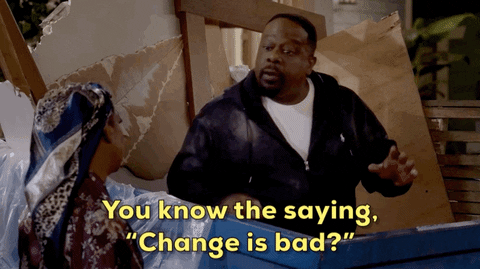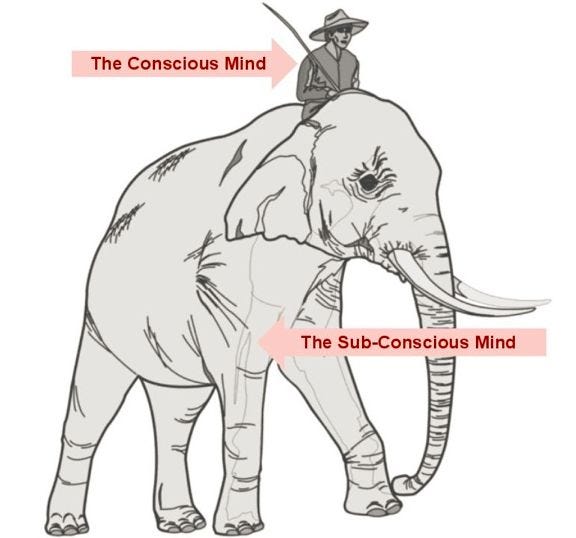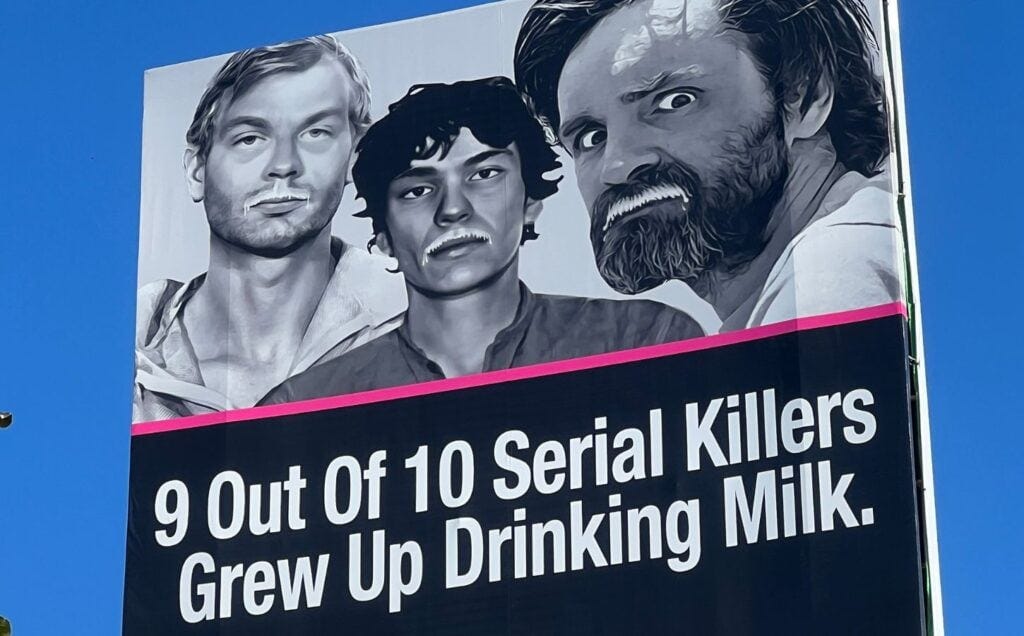🐘 How do we change behaviour (sustainably)?
Which psychological patterns can help us to bring about change and what this has to do with elephants.
➡️ You can also listen to this posting in my podcast 🎧
Hi 👋 I’m Florian Schleicher. This is the FutureStrategies newsletter of FUTURES. Thank you so much for reading along 💚 If you want to learn strategic marketing from me, then my Simple & Sustainable Marketing Academy is the perfect fit for you.
Whenever I give talks or workshops on marketing & strategies, we often come to the same point in discussions:
Marketing has the task of bringing about a change in behavior.
But:
How do we change consumer behavior?
And preferably towards a more sustainable lifestyle?
How do we use marketing to bring about a change towards a "greener" future?
Big questions - and I, too, spent a long time looking for the right answers.
I would like to share a few of my answers with you today.
So let's start with the first question:
🔀 How do we change consumer behaviour?
To do this, we need to understand one thing at the outset: People don't like to change. We are biologically conditioned (at least most of us) to see change as a danger and a threat.
And the paradox is: although we know that humans have become so dominant on our planet precisely because we are best able to adapt to our environment, we fundamentally dislike change.
For example, there is always resistance to change when there are new technologies.
“Being afraid of technology is not a new phenomenon: people literally hid from electricity. In the 1890s, people were so worried about the bicycle’s impact on society that they made up a medical condition to deter women from cycling.”
Jane McGonigal
But as forward-looking people, we want to make a difference.
But how do we take other people with us on this journey?
First of all, we need a clear understanding of who our target group is, what moves them and what challenges they face in their everyday lives.
So we need to ask questions like:
Who are they?
Who and what is in their environment?
What do they want?
How do they feel?
And once we have understood this in detail, we can move on to the next step - concrete behavioral change.
I found Jonathan Haidt's exciting approach in Chip and Dan Heath's book "Switch":
🐘 The Elephant and the rider
This model assumes that we all have two sides inside of us, two currents and motives within us: A rider - our rational consciousness - and an elephant - our emotional subconscious.
Our rider is rational and goal-oriented. She has a direction in which she wants our elephant to go and tries to steer it in that direction. It looks as if she is in charge because she is sitting on top and holding the reins.
The elephant represents our emotional thinking, which is based on intuitive impulses that we, like all animals, have developed. This part of our thinking is not analytical, but based on emotions.
In fact, our elephant's emotional reasoning is stronger; when rider and elephant disagree, the elephant almost always wins.
Some examples:
In the evening, we think we want to get up early in the morning, so we set the alarm clock for an early time. In the morning, however, we feel tired and push the alarm clock away and snooze.
For the New Year, we decide that we want to exercise more and eat healthier. A few weeks later, however, it is very tempting to sink into the couch and eat comfort food after a long day.
We understand that we should pursue a more sustainable lifestyle and do something about the climate crisis. But on a day-to-day basis, it's complicated to research sustainable products and then it costs even more.
All examples where our two sides come into conflict.
We believe that we make rational decisions that are free from the influence of our emotions, intuitions and moral concerns, while we are often not even aware of their influence - I wrote about some psychological tricks brands use here.
And consumers and decision-makers feel the same way when they want or have to decide on something different, new and innovative.
Most marketers and founders are good at appealing to our inner riders and listing reasons why a change or a purchase is a good decision.
But in doing so, many forget about the emotional side of the elephant.
Don't get me wrong, both roles are important to us.
“The Rider provides the planning and direction, and the Elephant provides the energy. So if you reach the Riders but not the Elephants, people will have understanding without motivation. If you reach Elephants but not Riders, they'll have passion without direction. In both cases, the flaws can be paralyzing. A reluctant Elephant and a wheel-spinning Rider can both ensure that nothing changes. But when Elephants and Riders move together, change can come easily.”
Chip & Dan Heath
To bring about real change, we need to reach and move both.
If the two sides are not in harmony, the elephant wins - our brain switches to auto-pilot and the path of least resistance is taken.
And this is exactly what happens all too often when it comes to sustainability.
🌱 How do we create change for a more sustainable lifestyle?
Our fellow human beings and target groups have a complex everyday life:
“Consumers are under constant pressure to be vigilant when it comes to saving for the future, protecting their health and avoiding climate catastrophe. In response to a culture of relentless self-optimisation – not to mention a feeling of powerlessness in the face of an uncertain future – consumers are taking back control by living life on their own terms. Instead of doing what they should do, they’re doing what they want, no matter the consequences.”
Foresight Factory
And any change towards sustainability requires not only good arguments, but also clear emotions.
We need to deliver both in order to bring about change.
If we don't do this sufficiently, people will become defensive, as Jane McGonigal describes in Imaginable:
Distancing - answering the call to seriously imagine the future this way “That’s a long way off, we don’t have to think about it now.” - “It won’t affect me personally, it’s someone else's issue.”
Denial - “That will never happen”, “If it happens, it’s not going to be a big deal”
Fatigue - “I have too many real problems today to worry about a hypothetical future one”, “I am burned out from trying to get other people to pay attention to this risk - I can’t do it anymore.”
Surrender - “I can’t personally do anything about this, it is beyond my control, so why bother.”
So we have to take people on a journey, understand them and their problems in order to really convince them.
We need to address the elephant and the rider.
As is so often the case, this works best with stories.
💚 How can we use marketing to create a transition to a "green" future?
The problem we have nowadays is that sustainability is rarely formulated in a simple and positive way.
There is bad news everywhere - we see crises and everything that doesn't work - and our inner elephant immediately thinks "too hard" or "too big".
Thomas Klaffke has also written a great article about this here.
We need to make sustainable solutions tangible, positive and simple.
An example of this is described by Chip & Dan Heath in their book:
How do we get people to drink healthier milk?
The first consideration is that we make sure that the better milk appears in the refrigerators of our target group.
People will drink anything in the house.
So basically the problem is even simpler than expected:
We don't need to change drinking behavior, we need to change buying behavior.
Bill Reger and Booth-Butterfield launched the campaign in two communities in the US and ran ads in the local media for two weeks. Unlike the bland messages of most public health campaigns, their 1% Milk campaign was powerful and specific.
One commercial pointed out that a glass of whole milk contains the same amount of saturated fat as five strips of bacon! At a press conference, the researchers showed local reporters a tube full of fat - equivalent to the amount contained in half a gallon of whole milk.
“Next time you’re in the dairy aisle of the grocery store, reach for a jug of 1% milk instead of whole milk.”
Shock convinces our elephant.
This is also one of the reasons why Oatly tends towards attention-grabbing and absurd advertising formats. They want to shake people up. And it's less about facts and more about emotions.
What was the effect of the milk campaign I mentioned earlier?
Before the campaign, the market share of low-fat milk was 18%.
After the campaign, it was 41%.
Six months later, it was still at 35%.
So changing behavior has to be simple and start where it really matters - at the core emotions.
Especially in sustainability and green marketing, we often work with big numbers and important statistics. But in the end, we need more emotion.
This is the only way to create real - and sustainable - changes in behavior.
Thanks for reading along!
PS: You can also read this posting in German.






